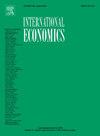奇迹的终结?中国的经济增长方式
引用次数: 0
摘要
尽管中国经济在最近一段时间内实现了“前所未有”的持续高速增长,但人们一直预计,中国经济迟早会突然放缓。本文考察了中国过去三十年的增长模式,将其作为一个类似于其他东亚经济体经历的收入追赶过程。我们在一个简单的新古典经济增长框架内分析这一点,使用一个国际可比较的宏观经济数据库。我们发现,中国的增长模式并非史无前例,而是与东亚的先行者非常相似。此外,我们发现,虽然中国的追赶主要是由资本深化而不是全要素生产率增长推动的,但由于资本回报缓慢递减,这种追赶可能会持续数十年。本文章由计算机程序翻译,如有差异,请以英文原文为准。
The end of miracle? China's economic growth pattern
Despite its recent period of “unprecedentedly” high and sustained economic growth, China has long been expected to face a sudden slowdown sooner or later. This paper examines China's growth pattern over the past three decades as a process of income catching-up similar to that experienced by other East Asian economies. We analyze this within a simple neoclassical framework of economic growth, using an internationally comparable macroeconomic database. We find that China's growth pattern is not unprecedented but rather closely parallels that of its East Asian forerunners. Furthermore, we find that, while China's catching-up has primarily been driven by capital deepening rather than TFP growth, it could be sustained for decades due to the slow diminishing returns to capital.
求助全文
通过发布文献求助,成功后即可免费获取论文全文。
去求助
来源期刊

International Economics
Economics, Econometrics and Finance-Economics, Econometrics and Finance (all)
CiteScore
6.30
自引率
0.00%
发文量
74
审稿时长
71 days
 求助内容:
求助内容: 应助结果提醒方式:
应助结果提醒方式:


